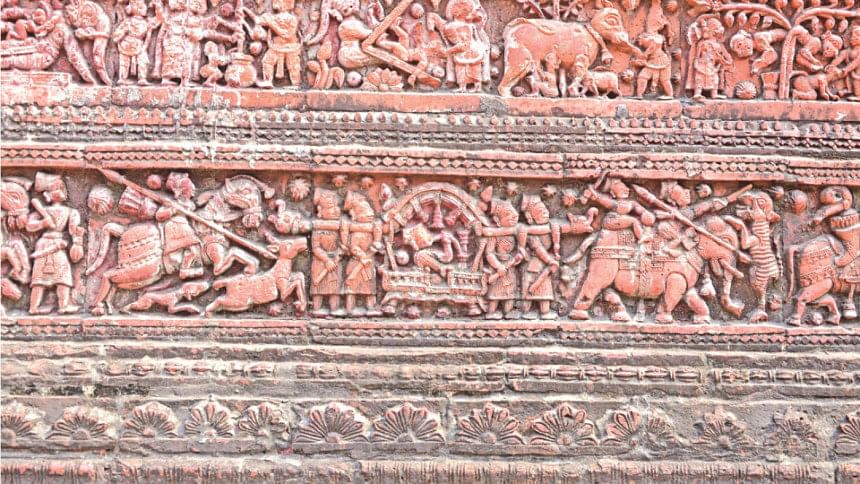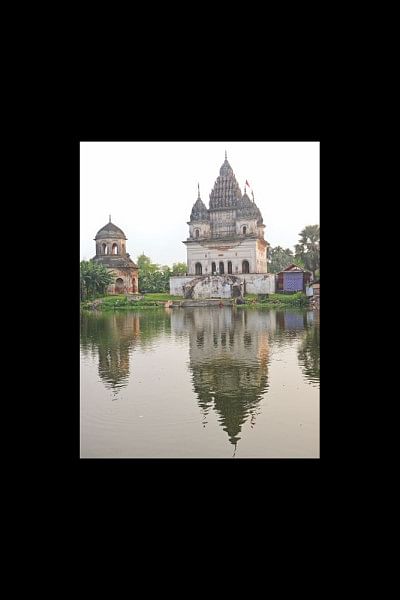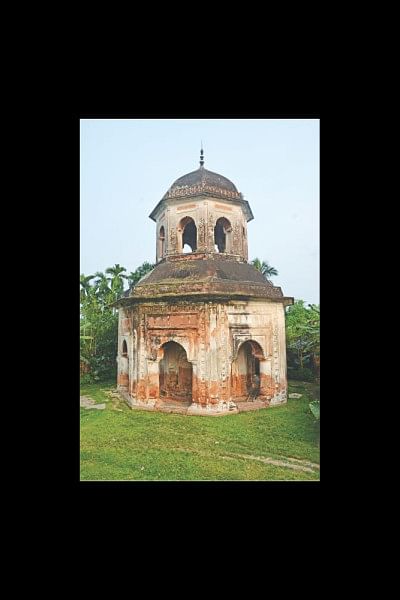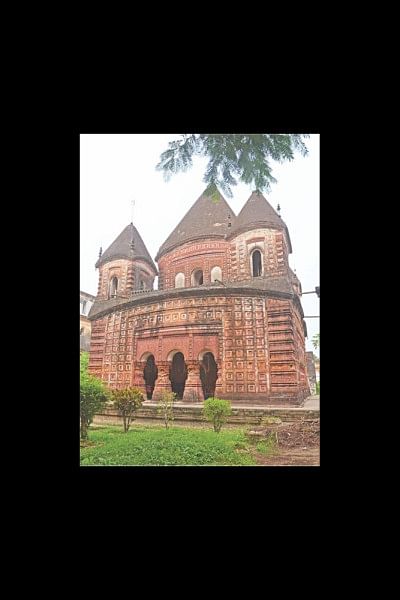The Temples of Puthia


PHOTOS: ANWAR ALI
The royal palace of Puthia, a small town near Rajshahi district, is one of the most popular archaeological sites of Bangladesh. For its grandeur and rich history full of myths and legends, this palace of a Mughal era zamindar dynasty attracts a lot of tourists, history enthusiasts and researchers. However, besides the royal palace, the palace precinct holds some of the greatest historical and architectural resources of our country. This is the temple complex of Puthia which includes fourteen ancient Hindu temples of different architectural styles erected by the lords of this palace in different times of their rule over the north-western part of Bangladesh that spans more than three centuries.
A large four storey structure coated with white plaster towers above the surrounding lakes, bazaar and all other buildings and guards the entrance to the palace precinct. This square shaped fortress like building is actually the largest temple of the Puthia temple complex. Housing ancient black-stone statues of the holy Hindu couple Krishna and Radha, the temple, known as Dol Govinda temple was erected in 1778. The temple's four storey structure which gradually goes up and finishes with a small square chamber is much similar to the Panchamahal structure of Fatehpur Sikri.

In the palace courtyard lies another impressive offering to the divine lovers Radha and Krishna which is called Bara Govinda temple. Placed on a high stone carved platform, this gigantic brick built structure is famous for its exquisite terracotta ornamentation. The outer wall of the temple has gracefully depicted the legends of Ramayan, Radha-Krishna and also the historical incidents of Mughal campaigns in Bengal. The four pyramidal shaped vaults on the temple's main structure proves the awesome architectural brilliance of the people of this part of Bengal. However, it cannot be known by whom and when the temple was erected but it is assumed from its architectural style that it was built in the second of half of 17th century.
The palace courtyard is studded with many small shrines belonging to many deities. These shrines are also very beautiful and boast of exquisite terracotta decoration. Just a few metres across, beside the treasury house of the palace, situated a complex of four temples. These four historic temples are Boro Ahnik temple, Chhoto Ahnik temple, Chhoto Govinda temple and Gopal temple. Highly ornamented terracotta plaques, traditional Bengali architectures such as pyramidal vaults and arched roof (chauchala and dochala) are some of the most appealing aspects of these architectural beauties. Gracefully landscaped by tranquil ponds and lakes, these temples are still frequently visited by Hindu devotees.

On the other side of the lakes, there are two massive but a bit isolated temples. One is called temple of Tara and another is temple of Shiva. The first one is almost destroyed and engulfed by trees and shrubs. However, the latter is well preserved and highly revered by the Hindus as it is considered as the largest Shiva temple of the subcontinent. The white plastered Shiva temple, placed on a very high platform, is famous for its unique architectural aesthetics. Crowned by five massive ratna structures (towers), it is also called Pancharatna Temple (Temple of the Five Jewels).
The temples of Puthia are an integral part of the rich cultural history of Bengal. As most of the temples are still frequented by Hindu devotees, most of the structures of the complex are more or less in good condition. However, a few of the structures have ruined and measures should be taken to protect the existing structures from further destruction and any careless modification.

 For all latest news, follow The Daily Star's Google News channel.
For all latest news, follow The Daily Star's Google News channel. 



Comments